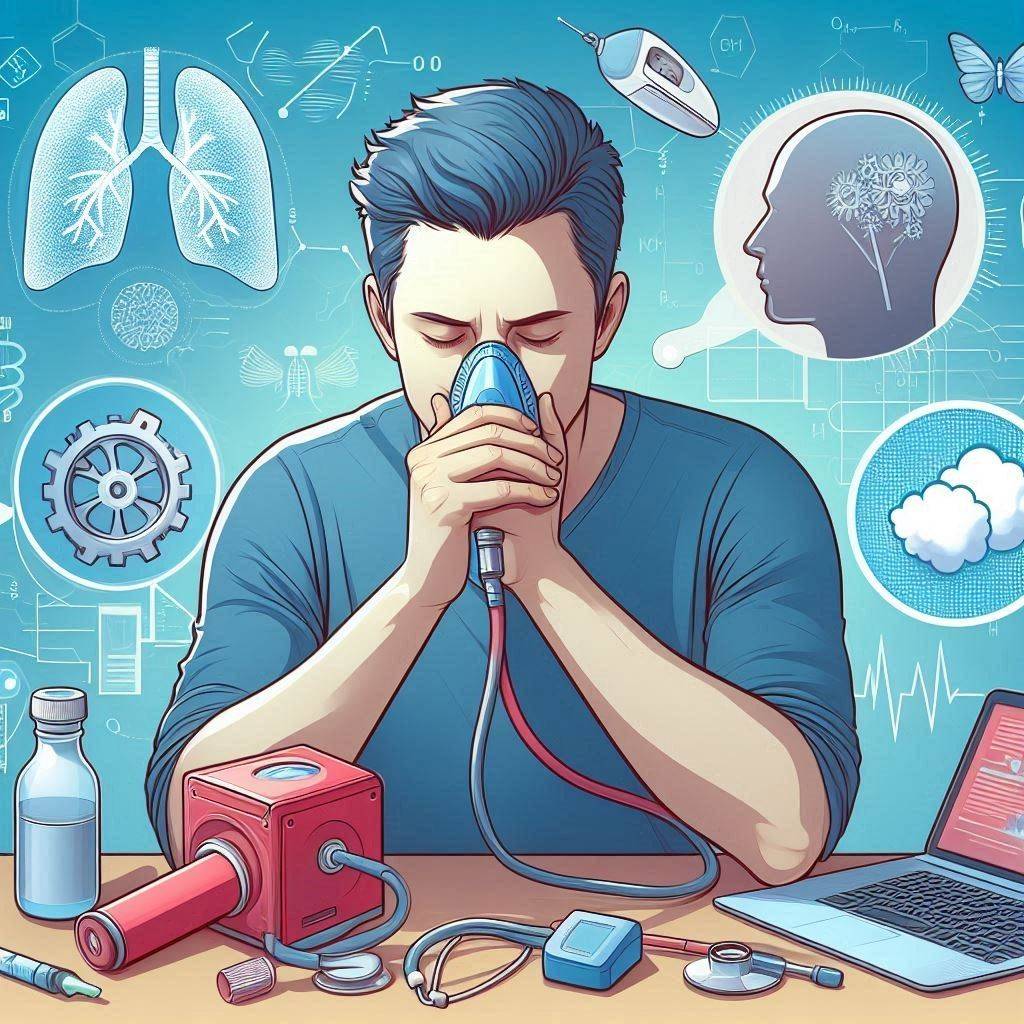Silent Asthma Attack Symptoms: The Hidden Danger You Can’t Ignore
Discover the subtle signs of silent asthma attack Symptoms and learn how to protect yourself. Don’t let these hidden dangers catch you off guard. Act now to stay safe.
Quick Summary
Silent asthma attack symptoms can be life-threatening if ignored. Key warning signs include:
- Subtle chest tightness
- Mild shortness of breath
- Unexplained fatigue
- Coughing without wheezing
- Rapid, shallow breathing
Don’t wait for severe symptoms. Recognize these subtle signs and seek immediate medical attention to prevent complications.
Introduction
As someone who has witnessed the impact of silent asthma attack symptoms firsthand, I can’t stress enough how crucial it is to be aware of this hidden threat. Silent asthma attack symptoms are often overlooked, putting countless lives at risk. In this comprehensive guide, we’ll explore everything you need to know about these sneaky symptoms and how to protect yourself and your loved ones.
What Are Silent Asthma Attacks?

Silent asthma attack symptoms refer to the subtle, often unnoticed signs of an asthma attack that can occur without the typical wheezing or obvious breathing difficulties. These attacks are particularly dangerous because they can escalate quickly without the person realizing they’re in trouble.
I remember a time when a close friend experienced a silent asthma attack. At first, we thought she was just tired, but her condition rapidly deteriorated. This personal experience taught me the importance of recognizing even the slightest changes in breathing patterns.
10 Silent Asthma Attack Symptoms to Watch For

- Subtle chest tightness: You might feel a mild discomfort or pressure in your chest.
- Mild shortness of breath: You may notice you’re slightly more winded than usual during everyday activities.
- Unexplained fatigue: Feeling unusually tired without apparent reason could be a warning sign.
- Coughing without wheezing: A persistent cough, especially at night, might indicate a silent attack.
- Rapid, shallow breathing: Pay attention to any changes in your breathing pattern.
- Difficulty sleeping: Waking up frequently or feeling unrested could be a symptom.
- Increased heart rate: A racing heart without physical exertion may signal respiratory distress.
- Difficulty concentrating: Brain fog or trouble focusing could be due to decreased oxygen levels.
- Pale or blue-tinged skin: This is a sign of poor oxygenation and requires immediate attention.
- Inability to speak in full sentences: If you find yourself pausing to catch your breath mid-sentence, it’s time to act.
The Science Behind Silent Asthma Attacks
Silent asthma attack symptoms occur when the airways become inflamed and constricted, but the typical wheezing sound is absent. This can happen due to:
- Severe inflammation causing near-complete airway closure
- Mucus plugs block smaller airways
- Reduced airflow failing to produce audible wheezing
Understanding the mechanism behind silent asthma attack symptoms has helped me appreciate the importance of regular peak flow monitoring and staying attuned to my body’s subtle signals.
Risk Factors for Silent Asthma Attacks
Certain factors can increase your risk of experiencing silent asthma attack symptoms:
- History of severe asthma
- Poor asthma control
- Overreliance on rescue inhalers
- Ignoring early warning signs
- Exposure to asthma triggers
- Stress and anxiety
Diagnose of Silent Asthma Attack Symptoms
Diagnosing silent asthma can be challenging due to the absence of typical asthma symptoms like wheezing and coughing. However, several tests and assessments can help identify the condition.
Common Diagnostic Tests
- Pulmonary function tests (PFTs): These tests measure lung function and airflow to assess how well your lungs are working.
- Allergy testing: Identifying allergens can help determine if allergies contribute to your asthma symptoms.
- Peak flow meter: Monitoring peak flow readings can help track changes in lung function and identify potential asthma attacks.
- Blood tests: Blood tests may be used to rule out other conditions or measure inflammation levels.
- Chest X-ray: While not specific to asthma, a chest X-ray can help rule out other potential causes of respiratory symptoms.
How to Identify Silent Asthma Attack Symptoms
Recognizing the signs of a silent asthma attack is crucial for managing your condition effectively. While these symptoms can be subtle and easily overlooked, paying attention to your body can make a significant difference.
Common triggers for silent asthma attacks include:
- Allergens (pollen, pet dander, dust mites)
- Air pollutants
- Respiratory infections
- Exercise
- Cold air
- Emotional stress
To help identify potential silent asthma attacks, consider keeping an asthma diary. This journal can help you track symptoms, triggers, and the effectiveness of your treatment plan.
Tips for identifying silent asthma attack symptoms:
- Pay attention to your body: Be aware of any changes in your breathing patterns, energy levels, or sleep quality.
- Monitor your peak flow: If you use a peak flow meter, track your readings to identify any downward trends.
- Communicate with your doctor: Regularly discuss your symptoms with your healthcare provider to rule out other potential causes.
Remember, early detection and management of silent asthma attacks are key to preventing more severe complications.
How to Monitor and Prevent Silent Asthma Attacks

- Use a peak flow meter: This simple device can detect changes in lung function before symptoms become noticeable.
- Keep an asthma diary: Track your symptoms, medication use, and potential triggers daily.
- Follow your asthma action plan: Work with your doctor to create a personalized plan for managing your asthma.
- Take medications as prescribed: Don’t skip doses of your controller medications.
- Avoid known triggers: Minimize exposure to allergens, irritants, and other asthma triggers.
- Stay physically active: Regular exercise can improve lung function and overall health.
- Practice stress-reduction techniques: Stress can exacerbate asthma symptoms, so find ways to relax and unwind.
Treatment and Management of Silent Asthma Attack Symptoms

Managing silent asthma requires a comprehensive approach involving medication, lifestyle modifications, and regular monitoring.
Medication
- Inhalers: These are the primary treatments for asthma, delivering medication directly to the lungs.
- Oral corticosteroids: In severe cases, oral corticosteroids may be prescribed to reduce inflammation.
- Biologics: For patients with severe asthma, biologics may be considered to target specific inflammatory pathways.
Lifestyle Modifications
- Identify and avoid triggers: Identifying and minimizing exposure to allergens and irritants can help prevent asthma attacks.
- Regular exercise: While it might seem counterintuitive, regular physical activity can improve lung function.
- Healthy diet: A balanced diet supports overall health and lung function.
- Stress management: Techniques like meditation, yoga, and deep breathing can help manage stress, a common asthma trigger.
Monitoring
- Peak flow meter: Regular use of a peak flow meter can help track lung function and identify early signs of worsening asthma.
- Asthma action plan: Developing a personalized asthma action plan with your doctor can help manage your condition effectively.
Remember, consistent communication with your healthcare provider is crucial for managing silent asthma. By working together, you can develop a treatment plan that suits your individual needs and improves your quality of life.
When to Seek Emergency Help
If you experience any of the following, seek immediate medical attention:
- Rapid worsening of symptoms
- Difficulty speaking or walking due to shortness of breath
- Blue lips or fingernails
- No improvement after using a rescue inhaler
- Peak flow reading in the red zone of your personal best
FAQs About Silent Asthma Attack Symptoms
What does a silent asthma attack feel like?
A silent asthma attack often feels like subtle chest tightness, mild shortness of breath, and unexplained fatigue. You might experience a persistent cough without wheezing and find it harder to concentrate or sleep. Unlike typical attacks, the symptoms can be easily overlooked, making them particularly dangerous.
What is the best position for an asthma attack?
The best position during an asthma attack is often the “tripod position”:
- Sit upright
- Lean slightly forward
- Rest your hands on your knees or a table
This position helps open your airways and makes breathing easier. Alternatively, standing with your hands on a counter or table, leaning forward slightly, can also help.
[IMAGE HERE: Add an illustration demonstrating the tripod position and the standing position]
How to stop an asthma attack without an inhaler?
While it’s crucial to always have your inhaler, here are some emergency techniques:
- Practice pursed-lip breathing
- Use the Buteyko breathing technique
- Try belly breathing
- Remove yourself from any triggers
- Drink caffeine (like coffee or tea)
- Use a peak flow meter to monitor your condition
Remember, these are temporary measures. Always seek medical help if symptoms persist or worsen.
How long does an asthma attack last without an inhaler?
An asthma attack can last anywhere from a few minutes to several hours without treatment. Silent asthma attack symptoms can be particularly deceptive, gradually worsening over time. Without proper intervention, an attack can become life-threatening. It’s crucial to seek medical help if you don’t have access to your inhaler and symptoms persist.
Conclusion
Understanding and recognizing silent asthma attack symptoms can be lifesaving. By staying vigilant, following your asthma action plan, and seeking prompt medical attention when needed, you can manage this hidden danger effectively. Remember, your health is in your hands – stay informed, stay prepared, and breathe easy.
Thank you for taking the time to read this crucial information about silent asthma attack symptoms. Your awareness could save a life – perhaps even your own.
Recommended Reading:



